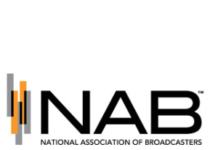
(By Bob McCurdy) A political ad avalanche is right around the bend. Some recent headlines:
“Bloomberg’s Campaign Spending Has Now Topped A Quarter-Billion Dollars” and “Mike Bloomberg Has Spent A Staggering $100 Million On Campaign Ads In A Month.”
Bloomberg is not alone. According to Advertising Analytics, Tom Steyer’s and Bloomberg’s ad buys equal about a quarter of the advertising money spent in the 2016 presidential cycle, including both the primaries and the general election.
“We’ve never seen spending like this in a presidential race,” Jim McLaughlin, a Republican political strategist who worked for Bloomberg’s mayoral campaigns, told Politico. “[Bloomberg] has a limitless budget.” In a revised forecast, BIA now estimates $6.58 billion dollars will be spent on local political advertising in 2020. Up $30 million from their previous forecast and, as the Carpenters would sing, we’ve only just begun.
So what does this all mean? How does a general market advertiser stand out, be sure their ads run, and avoid being tarred by all of the negativity?
It’s safe to assume that most of this spend will not be complimenting the opposition but will be quite negative. Historically, the best predictor of a campaign’s tone has been the closeness of the race. The tighter the contest, the meaner and more negative the campaign. Not surprisingly, pundits expect the margin of error between winning and losing in many races to be razor thin in 2020. This is not good news for non-political advertisers.
Dolf Zillman conducted a well-regarded study years back known as the “excitation transfer” theory that concluded that irritation brought about by one ad carried over to subsequent entirely unrelated ads, with Ferris and Bakker, writing in the Journal of Advertising, coming to a similar conclusion. We’ve all personally experienced the toxic impact of negative political advertising resulting in “flight,” tune-out, or worse, disdain. This is the kind of ad environment any advertiser would be wise to avoid.
Our good friends at Media Monitors recapped the last three months of the 2016 election in several battleground states. In the charts below, the three network affiliates, ABC, CBS, and NBC during late news (11P-11:30P) will be reviewed.
In 2020, with all 435 members of the House, 35 Senate seats, 11 Governor’s seats, and the White House up for grabs, this year’s landscape is likely to make 2016’s look like Mr. Rogers’ Neighborhood with many more states resembling the Vegas stats than not. The aggressive Super PACS, and the hundreds of millions of dollars they’ll have at their disposal, will also surely contribute to the mudslinging.
So what did 2016’s TV late network news landscape look like?
Three months prior to the 2016 election 23.5% – 40.3% of all ads airing in late local news were political, with each commercial break containing 1.9 – 3.3 political ads on average.
 Two months prior, 28.8% – 52.6% of all ads were political, with each commercial break containing 2.3 – 4.3 political ads:
Two months prior, 28.8% – 52.6% of all ads were political, with each commercial break containing 2.3 – 4.3 political ads:
 For the month prior, 40.5% – 62.4% of all ads were political, with each commercial break containing 3.1 – 5.0 political ads:
For the month prior, 40.5% – 62.4% of all ads were political, with each commercial break containing 3.1 – 5.0 political ads:
 And these are 2016 figures. Increase them by some multiple to approximate 2020. Is there any way in which this type of on-air TV ad environment could ever be construed to be ideal, desirable, or even acceptable?
And these are 2016 figures. Increase them by some multiple to approximate 2020. Is there any way in which this type of on-air TV ad environment could ever be construed to be ideal, desirable, or even acceptable?
The bottom line is this:
– If a commercial airs in a negative, antagonistic environment of political attack ads, there’s a good chance it will be tarred via what is referred to as a negative halo effect.
– If a commercial follows a commercial for a candidate with whom the viewer disagrees, viewers disengage and it takes time for them to re-engage — by then your ad is over.
– A lot of folks are turned off by politics or have already made up their minds, so political ads are at best irrelevant, at worst a cause to “flee.” This sets the bar higher for the subsequent non-political commercial’s creative to reengage them.
– In 2020, the Las Vegas data is more likely to be the norm in many states.
What kind of value will an advertiser get for their marketing dollar on TV in 2020? TV rates are already beginning to increase and “bumping” will become an issue. What percent of commercials will actually air due to higher Super PAC rates and the national races?
If you’re a general market advertiser and want your commercial to air in the proper environment, think radio. If you are a political candidate and are interested in getting elected, make sure your campaign gives the radio medium another look before it’s too late, as the avalanche and mudslinging is just beginning.






